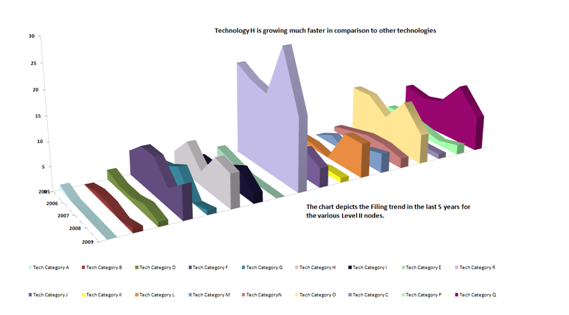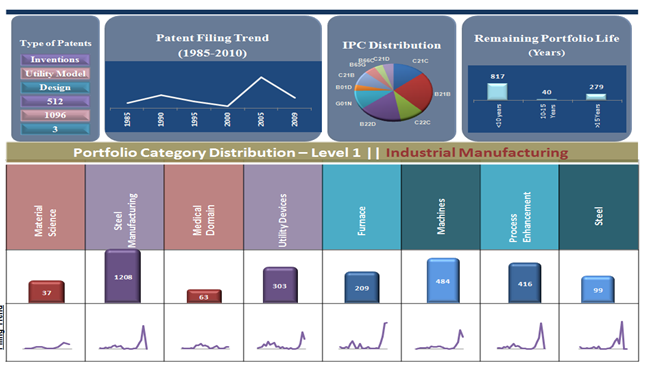In this blogpost, Anjali chopra, a brand and business analyst at GreyB Research (www.greyb.com), a patent based consultancy where some of the most brilliant minds delve on patents to derive world class insights writes about Patent Analytics- A tool that can help IP Law firms win more clients.
A lawyer managing a law firm is no less than a CEO of a tech company. He is also an entrepreneur. He is smart, hard working, insanely capable and a great problem solver. And like every other CEO of a tech company, a lawyer managing a law firm also wants a big clientele.
The question that stares at face directly, however, is: how to increase the clientele? By paid marketing or advertising, you uttered? No. The answer is something else.
But before I divulge the answer, consider asking yourself this question- Why will a potential client or company choose your law firm over your competitors’ firm? What advantages would the client gain by choosing you over your competitor?
There are various factors that would set you apart from your competitors – reputation, experience and a successful track record being few of them. But what if there exists a facet that is capable enough to overpower all the above-mentioned factors. Sounds great, isn’t it?
The facet is none other than Patent Analytics (i.e.,) using technology to scrutinize patents in order to derive quality insights. These quality insights can help a law firm in all the stages of a patent lifecycle, be it procurement, litigation or maintenance. The advantages that analytics has to offer are multi-fold ranging from identifying significant prior art in a crowded area to identifying white spaces that could strategically be captured via patenting, or identifying potential patents that could be licensed to distinguishing low-quality patents that could be discarded to save millions in maintenance costs.
And there’s more to it. Whether you are an in-house IP counsel or an external law firm assisting companies secure IP, analytics can provide you an edge over your competition. Without further ado, join me on the ride to explore the power of analytics and how leveraging it can help you stay steps ahead of your competition in every aspect of the patent lifecycle. Brace up, here we go.
Before and during Procurement phase: Securing a patent is comparatively easier than making money over it. When the goal of the client is to secure a revenue flow by means of licensing the patent instead of just protecting the invention, it gets important that patents be filed after conducting a thorough research on the technological area. Research suggests that patents which are filed after scouting an entire technological area tend to be more successful and are often sources of steady income from licensing.
For instance, consider the following chart depicting the filing trend in various technologies for a period of five years. It could be clearly seen that Technology H, O and Q have the highest number of patent filings whereas technology A has lowest. In case, if a company develops products or performs R&D using technology A, it can get very easy for the company to build a toll-gate over the technology ensuring a continuous source of licensing revenue when the technology takes off.
In addition to identifying technological areas, future competitors could be identified based on the patent filings in a particular area. Moreover, based on detailed analysis, it could further be decided whether any existing patents should be designed around or a license should be seeked. Based on such insights, law firms could easily share the knowledge with their clients which would benefit both the parties mutually. While the clients can benefit by deciding just the perfect patent filing strategy by means of these insights, law firms reap the ROI by retaining and gaining clients.
During Litigation Phase: Litigation is the most important phase in the lifecycle of a patent and often considered as a phase of prime importance where lawyers and law firms are involved. Though most firms and attorneys seek the help of technology to perform infringement searches, it is noticed that the use of technology is often constrained.
With the sharp rise in the field of analytics, the better approach is to employ a data-driven approach to study the behavior of both plaintiff and defendants based on which further action could be taken. In the US, with the availability of public records, it has become a common practice for law firms to take decisive actions based on insights derived from the study of patents and other publically available legal information.
Referred to as moneyball for lawyers, a term coined by Owen Byrd, leveraging the power of analytics can help law firms take a certain number of calculated decisions based on the statistics derived from the study of legal information. And as they say it, one calculated decision is way more powerful than hundred random decisions. Combining the power of analytics with years of experience in law industry is the most fruitful combination that assures success for both the client and law firms.
During Maintenance phase: The maintenance phase is a stage in which significant decisions for the accumulated portfolio should be taken to reap benefits from the investment. Analytics play a major role in this phase as the insights can be helpful in deciding the next strategic move to increase ROI.
For instance, consider the below chart depicting the macro level analysis of a patent portfolio of a particular manufacturing company. It could clearly be seen that the company has significant authority in steel manufacturing domain with a lot of patents filed in the last few years. In order to reap a large ROI, the company can license its patents to its competitors or totally monopolize the market by enforcing all the patents it has in its portfolio.
Different actions could be taken based on the objective of the client, be it monetization of the patents in the form of licensing, signing mergers or acquisitions to get a stronger hold in the market or weeding out low-quality patents to save millions in maintenance costs. No matter what the objective of the client is, analytics can always help decide the right move.
Whether you are an in-house IP counsel for an organization or an external law firm assisting companies secure IP, analytics can provide you and your clients an edge over your competition. The quality insights derived won’t just help you gain more clients but also help end-users in deciding the next strategic move that should be taken to reap maximum benefits out of the investment made on IP, be it in the form of monetization, litigation or attaining a monopoly. Leveraging the power of analytics will ensure that you and your clients emerge as winners.
After all, winning is what leaders strive for.
Keep winning!
 Serato DJ Crack 2025Serato DJ PRO Crack
Serato DJ Crack 2025Serato DJ PRO Crack













 Allow notifications
Allow notifications



